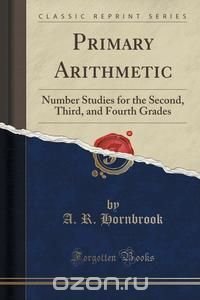Excerpt from Primary Arithmetic: Number Studies for the Second, Third, and Fourth Grades
The progress of a beginner in arithmetic is of a desirable kind when it involves a succession of insights into the relations of numbers and an increase of expertness in dealing with them. It is the aim of this first book to secure these ends. Its material has been chosen with careful reference to the development of the number sense of little children as observed by the author and as reported by many other observers.
It is believed that when a child realizes the meanings of the first ten number names, has learned to make combinations within 10, and is able to count to 100, he is ready to take up the first hundred as an aggregation of tens, to consider other numbers as aggregations, and to discover their relations. At that point this book begins.
The use of diagrams called "number tables" as a concrete basis for the child's thinking while he is getting his first ideas of the facts of the addition and multiplication tables is a distinctive feature of the work. Children readily learn from a number table like that on page 14 such facts as "5 tens = 50." The five columns of numbers are as concrete to them as five sticks, and the figures "50" at the end of the fifth column make them much more suggestive. Much of the work given in this book would be entirely too difficult for the children for whom it is intended if it lacked the basis of the measurements of the number tables.
About the Publisher
Forgotten Books publishes hundreds of thousands of rare and classic books. Find more at www.forgottenbooks.com
This book is a reproduction of an important historical work. Forgotten Books uses state-of-the-art technology to digitally reconstruct the work, preserving the original format whilst repairing imperfections present in the aged copy. In rare cases, an imperfection in the original, such as a blemish or missing page, may be replicated in our edition. We do, however, repair the vast majority of imperfections successfully; any imperfections that remain are intentionally left to preserve the state of such historical works. Это и многое другое вы найдете в книге Primary Arithmetic
